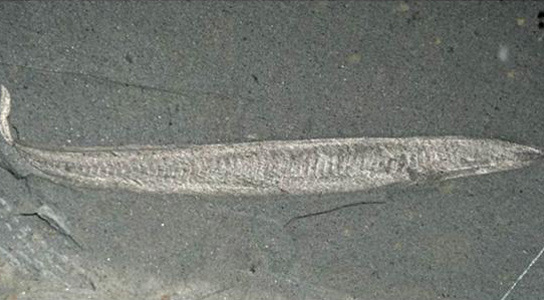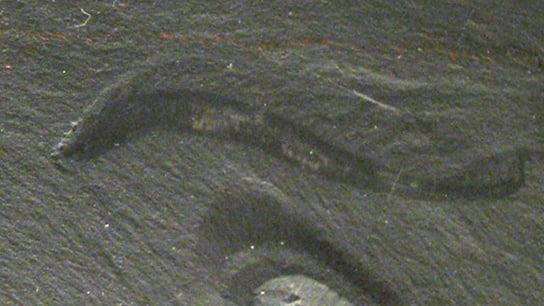
The Middle Cambrian Pikaia gracilens, from 505 million years ago, was a fish-like worm, which has the possible dubious distinction of being one of humanity’s earliest genetic ancestors. These fish-like worms had the beginning of spines, including a notochord and a nerve chord, which wasn’t obvious to distinguish initially. The researchers published their findings in the journal Biological Letters.
Jean-Bernard Caron, a paleontologist at the Royal Ontario Museum, co-authored the study with lead author Simon Conway Morris. In the ’70s, Morris suggested that the lancelet-like species could be one of the earliest members of the Phylum Chordata, the class of species that spawned animals with spines, such as all vertebrate animals that naturally include humans. He didn’t have any proof of his assertions.

There appeared to be something like a notochord, which is a primitive spine that forms in embryos of all vertebrates. In the ’90s, more P. gracilens specimens were collected and all of them were subjected to an electron microscope. Researchers were able to identify myomeres, which are bands of muscles that are the precursors of skeletal spines.
This would make it one of the earliest known chordates but the fossil record isn’t precise enough to know more about P. gracilens’ soft tissues. P. gracilens was about the length of a human thumb, flat, with the head the size of a period. It had two tentacles at the front. The researchers found no evidence of eyes in their specimens.
There is a possibility of species convergences, but the researchers think that the evidence of myomeres, notochord, and gills is enough to indicate that they are part of the precursors of vertebrates.
Reference: “Pikaia gracilens Walcott, a stem-group chordate from the Middle Cambrian of British Columbia” by Simon Conway Morris and Jean-Bernard Caron, 4 March 2012, Biological Letters.
DOI: 10.1111/j.1469-185X.2012.00220.x
Never miss a breakthrough: Join the SciTechDaily newsletter.
3 Comments
Why “dubious distinction”. What’s dubious about the distinction? What kind of writing is that?
Thank you John. Glad to know that I am not the only one who doesn’t hate human beings.
I am related to a fish?!?!